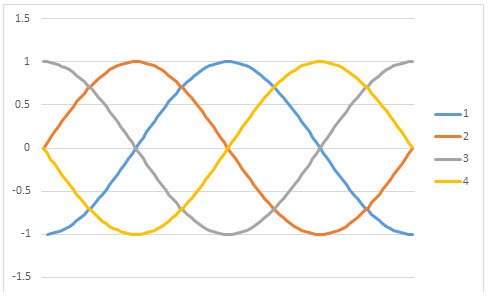SQL Server FDERIV Function
Updated 2023-10-18 20:35:52.667000
Description
Use the scalar function FDERIV for function differentiation for orders n = 1 to 8 using finite difference approximations.
Syntax
SELECT [westclintech].[wct].[FDERIV] (
<@Func, nvarchar(max),>
,<@VarName, nvarchar(4000),>
,<@X, float,>
,<@N, int,>
,<@H, float,>
,<@Meth, nvarchar(4000),>)
Arguments
@Func
The function to be evaluated, as a string. The function must be in the form of a SELECT statement.
@VarName
The name of the variable.
@X
The starting value for the evaluation.
@N
Order of derivative, should only be between 1 and 8; for n = 0 function values will be returned.
@H
Step size
@Meth
‘C', ‘B', or ‘F' for central finite difference, backward finite difference, or forward finite difference
Return Type
float
Remarks
If Func returns a NULL then NULL Is returned.
If Func is not a valid SELECT statement then NULL is returned.
If no solution is found then NULL is returned.
If X is NULL then X = 0.
If N is NULL then N = 1.
If H is NULL then H = 0.
If Meth is NULL then Meth = 0.
If H <= 0 then H =

Examples
Examples
Example #1 Calculate f(x) as sin x, d(sin x)/dx, and cos x
SELECT SIN(PI() / 4) as [sin x],
wct.FDERIV('SELECT SIN(@x)', '@x', PI() / 4, 1, NULL, 'B') as [d(sin x)/dx],
COS(PI() / 4) as [cos x];
This produces the following result.
{"columns":[{"field":"sin x","headerClass":"ag-right-aligned-header","cellClass":"ag-right-aligned-cell"},{"field":"d(sin x)/dx","headerClass":"ag-right-aligned-header","cellClass":"ag-right-aligned-cell"},{"field":"cos x","headerClass":"ag-right-aligned-header","cellClass":"ag-right-aligned-cell"}],"rows":[{"sin x":"0.707106781186547","d(sin x)/dx":"0.70710678116969","cos x":"0.707106781186548"}]}
Example #2
Calculate the 1st through 4th derivatives of sin x from -PI to PI and paste the results in a Excel PivotChart.
SELECT n.n,
SeriesValue,
wct.FDERIV('SELECT SIN(@x)', '@x', SeriesValue, n.n, NULL, '22')
FROM wct.SeriesFloat(-PI(), PI(), .02 * PI(), NULL, 'L')
CROSS APPLY
(
VALUES
(1),
(2),
(3),
(4)
) n (n);
This produces the following result.

See Also
BRENT - Find the root of a continuous function of on variable
GRAD - Numerically compute the gradient.
HESSIAN - Numerically computer the Hessian matrix
JACOBIAN - Numerically compute the Jacobian matrix
NEWTON - Find the root of a univariate function
SECANT - Find the root of single-variable continuous function.